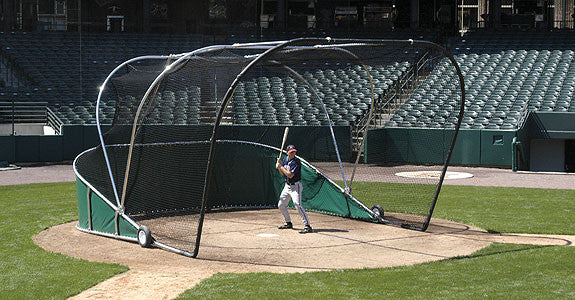Dear Coach
I coach baseball at the 13-15 Babe Ruth level. We work hard with our pitchers holding runners on to avoid giving up really easy stolen bases. At this point, I think our pitchers are doing well at this task. I have a question or two about the second baseman and shortstop and their jobs of helping hold runners on at second base. I feel if we are going to give up a steal of third base, the runner that steals should at least be held on 2B properly before he earns that stolen base on us.
1) Are there different responsibilities for the two positions in regards to holding the runner at 2B vs. a left handed or right handed batter?
2) What should the footwork for the short stop and second baseman involve?
3) Should they be saying anything, tapping their gloves, or etc.?
Thanks for any tips you can offer me in regards to answering my questions.
Dear Kelly
You have this pretty well in hand and I answer that because of your suggestions and thoughts. The decision on who holes a runner at second with distractions, playing close to him, are all dependent upon the batter and where he's most likely at the ball. The general answer is whether he's left or right handed but there certainly can be exceptions as you get to know your opponents. There are several ways simply bluffing, going always a bag, living in front of the runner and backing away, moving up directly behind the runner so he knows you're there. All these things have to be done in synchronization with your pitcher so that you don't get caught out of place. Now your pitcher can help you with bluffs every once in a while, second and third looks (very is looks at the runner), pickoff plays even when there not successful which is second are pretty rare but they keep a record closer. But you are right you got to do a combination of things and you need to make sure a runner knows you're there otherwise he'll become very comfortable and get an extra step or two when the balls hit, we wants to steal, distracting your pitcher, so is a variation of what I've said and above what you said.
Coach Arnald Swift
Coach
My son pitched to one batter in his last game. The bases were loaded when he came in and he unfortunately walked in the winning run. How is this counted against him since none of the runs were his. Is he credited with anything except the walk?
Larry
You are correct, the walk is all your son, pitcher, get placed on his score sheet for that game. The other 3 runner and there actions were the responsibility of the original pitcher. Though I know internally your son feels like it is his fault, but he did not put those 3 runners there, and how would he feel if they scored in some other way EX: pass ball, error, steal those things that he had no control over the result would have been the same and your son (the pitcher) did his job and other did not, that is why it is a team WIN OR LOSS, a single act did not cause this result. Take up an individual sport like, golf, wrestling, tennis, track where you have total control over the situation. He will be fine and I ask you don't worry about statistics, just as the team of which your son is part of to do things right then winning and losing will take care of itself.
Coach Arnald Swift
Dear Coach
I am coaching a 9 year old baseball team and have been discussing coaching techniques with my assistants. My assistants think we should make players run laps and do push up when they constantly make the same mistake. I am of the opinion that repetition and showing proper technique is the proper way to break habits and correct mistakes. What is your opinion and when should discipline such as laps and push ups be used on the baseball field? Should lack of effort or hustle result in laps and/or push ups and if not what is your recommendation?
Thank you
============================================
Dear Mark
I coached nine-year-olds and laps or out to the fence and back does have its place but in my opinion that places only to get their attention not in any way shape or form for mistakes. Your coaches along with yourself need to teach technique and do the drills that allow the techniques to be used, and reinforce what's correct in what you're trying to teach and running laps and doing push-ups does not do that. Now the separate question is lack of hustle or lack of effort I found that setting against the fence is the worst punishment of all if you don't want to hustle you don't want to try then we don't need you bothering the other people make them sit up against the fence and just watch. So I can answer your question in three ways yes you can make them run to get their attention, but you don't make them run or do push-ups for mistakes in skill technique work, then isolate them if they don't want to pay attention or hustle they're just taking away from your time and the players that are trying to work and learn . You have to distinguish between discipline and punishment. Discipline is the ability to concentrate and do what you are asked to do at the time it needs to be done. Punishment is running, push-ups, isolation and they're meant to get a players attention and teach him the value of paying attention and learning discipline. As a coach you need to distinguish between the two of them with your players.
Best of luck.
Coach Arnald Swift
Dear Coach
My son is 8 years old, he has been playing baseball since he was 4 and I've worked with him since he was 2. My question is he kills the baseball when I throw him BP and when I pitched to him last season in coach
pitch but now he has to hit off of player pitchers and he is pretty much not swinging the bat at all. He just stands there and when I ask him about it he says that the pitches were not strikes. How do I remedy this? He just made a 9 year old select team and I have to fix this before the season starts or he is either going to lead the league in walks or strike outs via looking.... What is frustrating for me is he has a ton of power, he is
4'9" 100lbs and hits lefty, I know how to fix mechanical issues but this one is mental.
Thanks!
Sam
Dear Sam
Let's make sure of one thing first off the bat does he have good mechanical skills and does he batting practice pitching, tee work, soft toss work well and consistently. My guess is you're going to answer yes then I have to agree 100% that it's all mental. What your boys doing is he thinking way too much and not just seeing the ball and hitting it. I don't know if you have control on are not but if I was his coach and I saw these things I would start to correct it by telling him that he has to hit the next pitch no matter what and if there are runners on base and we can collect hit-and-run, but in reality what were trying to do is take the decision-making out of his hands and make him swing at the next pitch the matter where it is. You will actually need to do this for an entire game and yes he may swing at some bad pitches anyway make an easy out or two but he will swing the bat he will make contact I promise you that. It's a very odd thing when you take away the decision-making, batter that actually is pretty decent they almost always get the ball the matter where it is in the strike zone out of the strike zone it doesn't make a difference they will make contact because their swing is good and they're not deciding if I should or shouldn't swing they know that already so they're just trying to get the ball and they will. Now if you can't do that a game because you don't have the control and what you need to do is go in the cage and tell him swing of this one no matter what don't swing at this one no matter what and start to take away the decision-making. You're just trying to get him comfortable with looking at the ball coming at him and swinging at it not whether it's a ball or strike not whether it's a curve or fastball just see the ball and hit. You will be amazed at how effective that is.
Please let me know how turns out.
Coach Arnald Swift
Dear Coach
My 8 year old has a good swing but does not hit the ball in the game. We play in a coach pitch league so the pitches are normally very good. Can you give me some suggestion for us to work on.
============================
I do understand your problem with little kids. As a matter of fact I do have a couple of things that you can do that will really help.
First and foremost you need to find yourself a protective screen for in the cage and place it in front of home plate. Then get you a 5 gallon bucket and turn it upside down and set behind the screen set up about 10
feet away from the batter. Now what you need to do is reach around the outer edge and underhand toss the ball to your batter. This is called front toss in it works with little kids better than soft toss from the side. You
will notice very quickly that for some strange reason, it must be the physics, that little kids can hit a ball thrown underhand. Then after you've done at for a couple of rounds give each kid like five swings have them
hurry in and out so they keep moving like you said the attention span is a big deal. Then in the third or fourth round flip it over hand from the same position so that you're down to there level and not standing above
them. You will be surprised how much better they hit I wouldn't even worry about the pitching machine until the game. What you're trying to develop his hand eye coordination.
Dear Coach
My 10 year old grandson has been playing baseball since he was five, with one year off last year.
Since t-ball he has had a fear of the ball. He has stepped back from catching, stepped out of the batter's box because of his fear of being hit How do we coach him to help him get over this fear?
Thank you
Granddad
Below is a stock answer for concentration and pitch recognition along with being confident at the plate.
Try it and I believe that the boy will start to hit and catch better.
For catching take way his glove and play catch with a foam ball or plastic ball then get a baseball and do the drill I talk about below. We have to get over any fear and use to the ball. Believe it or not when they first
start the glove just gets in the way so eliminate it most of the time.
As simple as this sound get a piece of plywood, prop it up at and angle, have him or us throw the ball up the board and then field it as it rolls back down.
The for fly balls or high throws, throw the ball onto a roof and catch it as it comes off, it is fun and teaches throwing and eye hand coordination. Use a rubber ball or tennis ball gives a safer aspect to it if you so
desire.
Coach Arnald Swift
Coach,
My son is a freshman in High School and played competitive baseball from March-October of last year. He will be playing JV basketball until JV Baseball starts in February. He needed the break; however, should he
be throwing before baseball practice starts in February? He’s a middle infielder and not an everyday pitcher.
Thanks,
Derek
Derek
This is a baseball and basket ball coaches answer, as I was both for a long time.
YES, only criteria is that he does not take time or effort away from his basketball ball team.
But yes he should start throwing, it is no different from running extra, weights, diet all the other things he may do out side of basketball.
I think he should play light catch from 30-40 foot for 5 days, move out to 50ft for 5 days, and so on with about 75 throws each day not don't worry about speed work on accuracy.
Then if time allow for him to get to the 110-120 ft mark then he should throw the last 10 throws of a session game speed. BUT be sure (if you are listening to me) that he has to work up to the 110 ft distance and
speed.
Let me know how it all works out.
Coach Arnald Swift
Coach
I have a left handed 6 year old. The coaches are having him bat right and throw right. They think he does better as a righty but I was wondering if this is a mistake because he is a lefty and sometimes it takes lefty's a little longer to figure stuff out. Should I encourage lefty or let it be righty?
Thank you, Ami
Dear Ami
Amy this is a simple answer if he's left-handed that he should do things left-handed in your coaches should be helpin him be a lefty in baseball being left-handed really can be an advantage. The question really don't make any sense. If he's truly a left-hander, eats, rights, points, all the normal things in life that he left-handed then you'll create big problems if you try to convert him to right-hander. I think there must be more to this story because I've never heard of a coach trying to turn a left-hander into a right-hander. Normally what happens is when they take a right-handed batter and try to teach him to let bat left-handed because of the advantage.
Therefore my advice is leaving left-handed and don't ever bring it up again tell your coaches that he's left-handed that's the way it is, unless there's more to this question that I see.
Coach Arnald Swift
Coach
I coach a 5th grade team and a 7th grade team. My assistant coach on the 7th grade team has instructed the boys to “see the throw” before yelling “cut or no cut”. This really has confused the boys on what they should do. Should we do this at these age levels?
Jeff
I think that is normal for the throw from the outfield. The words and coaching may be a little different but what I believe is he is asking the control guy to do is wait until he see the throw to tell if it is on line, has a chance to make the put out and at what base. The control player can't not say cut, hold, cut to ? until he sees the throw.
So the works "see the throw" is telling him to wait and look at the throw and make the decision of where to go with the throw.
It strikes me as decent point, with different words.
Coach Arnald Swift.
I have a 9 year old that has been playing ball for 4 years and has been hitting balls pretty good. In the last two months he has moved to travel ball, and has not been hitting very well. Out of a bucket of balls thrown from 30’ he could not hit but one. He has been going to batting cages and is batting at 45 to 55 mph. ok. His swing is complete and straight with no head turning and not stepping out of box. I don’t know what to tell him any more I know he can see the ball and follow to plate. What do you thinks is the problem? Using a 29 x 19oz bat.
Thanks
Richard
--------------------------
Richard
Do some of or all of the following things.
1. Throw him balls (plastic or soft) underhand from out in front. Under hand is important and from in front is important. The drills is called front toss.
2. You throw to him after the front toss drill live so he can hit it do not worry about speed.
3. Some where along the line do a drill of taking the bat away and having him just stand there and watch the ball so he can tell if it is a ball or strike and get use to the ball coming at him and judging it.
4. Work off a stationary tee
5. Limit the pitching machine for a couple of weeks while doing the drill above then reintroduce the machine.
6. Then in about 3 weeks you hitting routine should be TEE WORK- FRONT TOSS- WATCH 10 PITCHES-15 LIVE PITCHES- THEN THE MACHINE THE REST OF THE TIME.
When you do this he sill start to hit the ball when it is pitched live/machine but you have to work on hand eye coordination first and foremost.
Coach Arnald Swift










